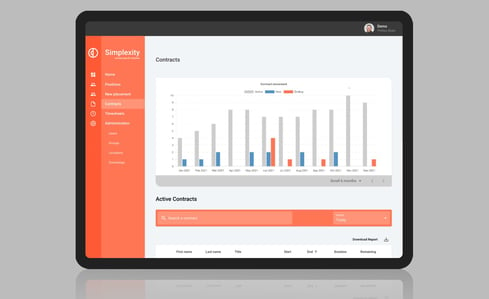Tax Structures for Contractors – What’s Right for Me?
As a contractor, you’re offered a degree of freedom that salaried employees simply don’t have. This includes choosing the tax structure under which you operate. These structures stipulate the rules and regulations you must abide by when filing your taxes at the end of the financial year, as well as compulsory dedications that may be applicable each time a payment is processed to you. They can also have significant impacts on how you operate your business, so choosing the one best suited to you is vital.
Curious about what's important to other contractors just like you? You can download our latest State of Contracting Report here.
Disclaimer: Oncore is not a financial advisory business. Whilst we use our expert partners to make sure the information in this article is up to date, we recommend you always check with your own financial advisor or accountant before making decisions.
What are my options?
Broadly, tax structures for contractors fall mostly into one of two camps – Pay-As-You-go (PAYG) or Proprietary Limited Company (Pty Ltd).
A PAYG Arrangement
Under a PAYG arrangement, a contractor enjoys benefits similar to an individual receiving regular salary, where their employer is managing their tax and super obligations. In the contractor’s case, this is typically done by an agency or a contractor management company like Oncore that takes care of their payroll.
Payments from clients are made directly to the contractor management company which then packages your salary – subtracting their management fee (Oncore charges just $1 per hour plus insurances) and withholding tax and super from the gross amount before depositing the rest into your account.
If you choose this structure, you are still free to source your own clients, use your own tools, maintain your office, and operate as agreed upon in your individual contract.
- Variable headline tax rate between 0 and 45% depending on income
- Mandatory super contributions and well as the option to elect for additional salary sacrificed contributions
- Ability to package eligible tax deductable expenses (salary package) to allow you greater take home page than you would ordinarily receive at tax time after claiming all your deductions
- No requirement to purchase own business insurance
A Pty Ltd Arrangement
Should you choose Pty Ltd, you are trading as a company, with yourself as director & shareholder. You are wholly responsible for sourcing your own clients and managing your own funds – just as if you were the owner of a bricks-and-mortar business.
As a Pty Ltd, your income can be subject to different tax rates and reporting requirements, depending on whether you operate alone or have others working under your company too. While you may still be subject to individual tax rates under your own Pty Ltd company due to personal services income rules, this structure can be attractive for some contractors. They have greater control over their cash flow given that you receive the gross amount when paid, rather than the net after deducting super and tax obligations. This is attractive for some contractors as they have greater control over their cash flow.
- Depending on how your company is set up and operated, a tax rate of 25% below $25 million aggregated turnover (30% otherwise). Please note: personal services income rules can affect the amount of tax you will pay under your Pty Ltd Company.
- Greater flexibility in superannuation contributions as weak as timing of payment of tax obligations.
- Must provide your own business insurance at your expense
Speak to the experts before you decide anything!
Want to know more about how you can get the most from your new life as a contractor? Contact Oncore today and we’ll be happy to connect you to our accountancy partners to discuss the best structure for your situation.












_11zon%20(1).jpg?width=302&height=124&name=linkedin-sales-solutions-vqWWOnA6--M-unsplash%20(2)_11zon%20(1).jpg)








